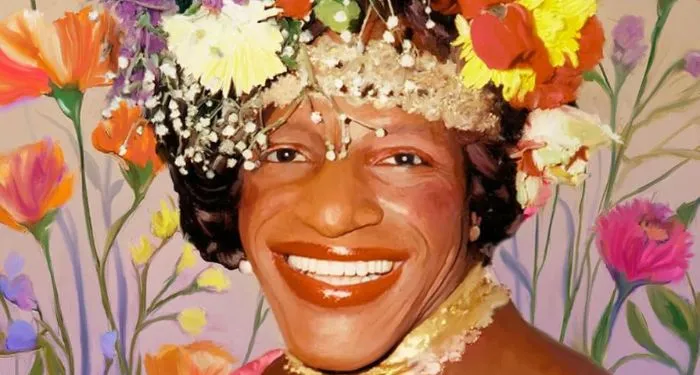
The Kingdom of This World [1949/57] – ★★★★★
One always comes to Alejo Carpentier’s books with a kind of trepidation mixed with delicious expectation. The knowledge that threading through his labyrinth of a prose will come with transcendental insights or unheard-of wonders makes his novels hard to resist. If I previously termed his novel The Lost Steps “a stimulating read of one extraordinary journey of self-discovery”, Carpentier’s The Kingdom of This World is a less introspective, but also much more intense reading experience as the author turns his attention to the 1791-1804 revolution in Haiti, a place Carpentier visited in 1943. In turbulent Haiti, we see the world through the eyes of slave Ti Noël, whose master is squire and plantation owner M. Lenormand de Mézy. Ti Noël’s early idealisation of one-armed man and mystic Macandal, the Mandingue, will eventually involve him in one of the world’s bloodiest revolutions. Mixing mythology, superstition, and the alleged cyclical nature of history, Carpentier takes no prisoners in this increasingly provoking, horrifying, but also absolutely enthralling novel of hell born of good intentions.
Carpentier is attuned to the ironies of that age, and his usual nuanced symbolism and metaphors come early on in the story when Ti Noël finds it amusing that a few mannequin heads of white men presented in a barber shop share the same display plank with the heads of slaughtered calves arranged in a butcher’s shop just next door, two rooms separated only by a thin wooden wall. There will come a time in The Kingdom of This World when the line between human and animal will become blurred, as nothing will be spared to ensure the rise of Black God in the war between the races. Real historical figure, victorious Black King Henri Christophe (1767-1820) will also feature in the novel, but even in this historical presentation, Carpentier will not stop with “the end”, and invoke his own, more thought- provoking and fascinating double.
The Cuban author cemented the tradition of magic realism in Latin America, but arguing for the real, natural occurrence of the marvellous and “miraculously” complex in Latin America – “Lo real maravilloso”. Given the true nature of events during the Haitian revolution, and the consequences of the complex clash of the multitude of cultures, traditions and knowledge strands, it is hard to argue with Carpentier that the events were anything but extraordinary. The author weaves into his story historical symmetries and dissonances, but also emphasises the inherently chaotic nature of history as perceived by our human brain (our inability to see the events objectively). And then, it is the image that drives the narrative forward – its colour and its force. The words and sentences appear in the novel as though the rain of truth just splashed over the pages, even when the author threads the line between facts and imagination. Often, Carpentier is not writing about this story or its character, he is writing within the story and the characters.
“…With wings one day, spurs another, galloping or crawling, he had made himself master of the courses of the underground streams, the caverns of the seacoast, and the tree-tops, and now ruled the whole island. His powers were boundless. He could as easily cover a mare as rest in the cool of a cistern, swing on the swaying branches of a huisache, or slip through a keyhole. The dogs did not bark at him; he changed his shadow at will…” [Carpentier/de Onís, 1949/57] (about one-armed mystic Macandal).
There are no preliminary descriptions giving way to action or scenes in The Kingdom of This World. We are always here and now, witnessing the slow build-up to the pandemonium: either with cattleman Macandal, gathering unknown herbs that have deadly properties, or in a hut of a witch, hearing strange whispers and the hooting of owls in the dead of night, or with a very vain white woman who embraces occult practices for the very first time after confronting the first real sorrow – the death of her husband from yellow fever. How can we then not believe that “…Back There there were princes as hard as anvils, and princes who were leopards, and princes who knew the language of the forest, and princes who ruled the four points of the compass, lords of the clouds, of the seed, of bronze, of fire…” [Carpentier/de Onís, 1949/57]. The pages of the book turn to madness in the blink of an eye…
The Kingdom of This World has no illusions about the nature of revolutions. The whip is passed from hands to hands, and the history of oppression and enslavement continues. The question is not whether you will have a master, but what master you will have. They can preach anything in Paris or Madrid, but the immediacy, the sheer reality of one’s environment still triumphs: the ancient rituals, including those of voodoo, the constant heat, and the history of oppression. The characters in the story are quite literary building and re-building the Tower of Babel, also a symbol of human vanity. Through short, punchy chapters, Carpentier reveals to us the chains, the human condition, and the illusion of victory and freedom.
“…he understood that a man never knows for whom he suffers and hopes. He suffers and hopes and toils for people he will never know, and who, in turn, will suffer and hope and toil for others who will not be happy either, for man always seeks a happiness far beyond that which is meted out to him. But man’s greatness consists in the very fact of wanting to be better than he is. In laying duties upon himself…” [Carpentier/de Onís, 1949/57].
🌴 Translated by Harriet de Onís, The Kingdom of This World is an intoxicating mix of the “marvellous” and the horrifying, fables and facts, as Carpentier captures the wonder, the unrest, and the rebellion with astonishing vividness and directness.




















 English (US) ·
English (US) ·